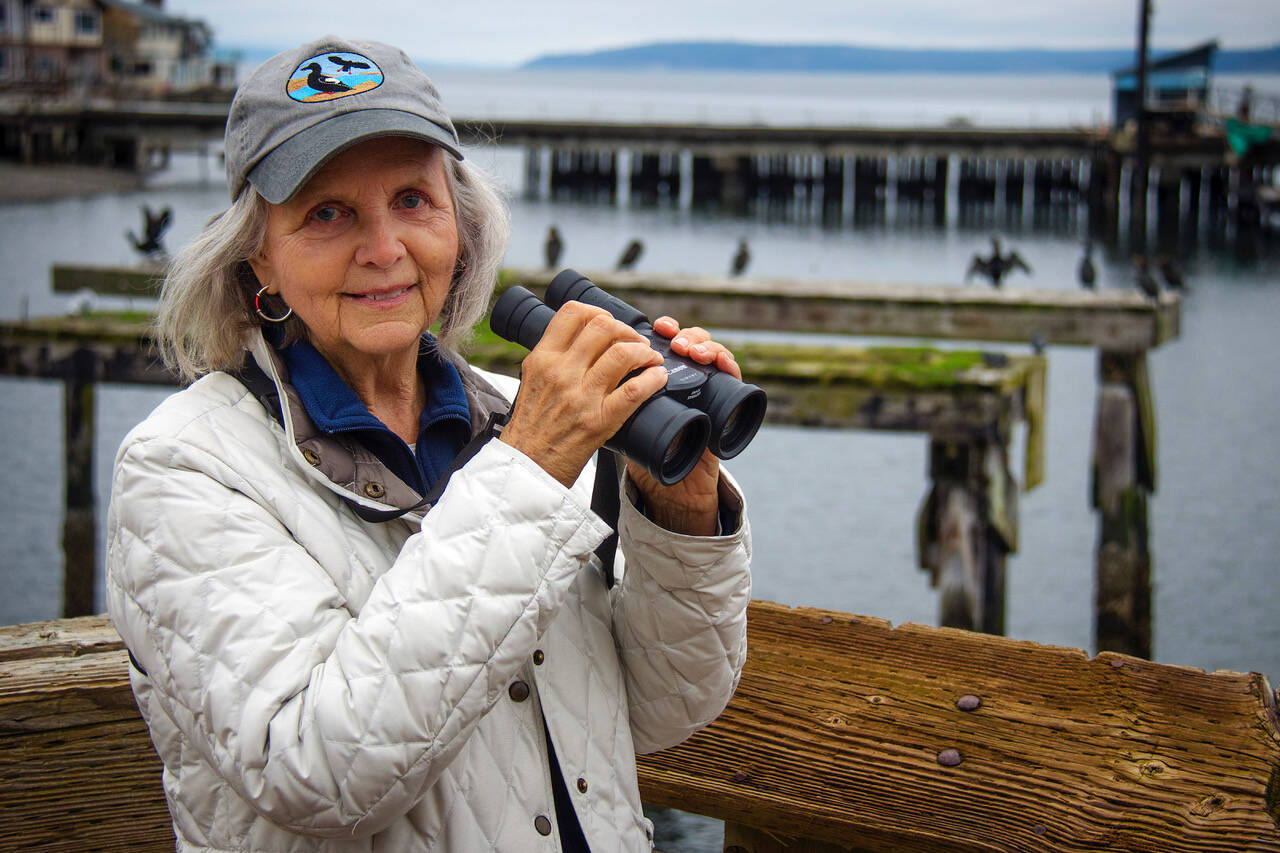For Frances Wood, the pigeon guillemot is an endless source of fascination.
So much so, that she has convinced hundreds of others to watch them too.
As one of the founders of a long-running project surveying the birds on a yearly basis, Wood recently received some recognition for her efforts.
The Island County Marine Resources Committee, Sound Water Stewards and WSU Extension presented Wood with the Jan Holmes award a few days before Sound Waters University, which is when the award is usually given out.
The annual award honors the memory of Jan Holmes, a marine scientist, educator and champion for stewardship of the marine environment who passed away in 2011.
Wood was in Mexico, thinking about trogons and red warblers – the birds she surveys down there – when she heard the news.
Wood and Phyllis Kind – who won the Jan Holmes award in 2013 – developed the Pigeon Guillemot Breeding Survey in 2004. What began as an effort to watch and keep track of the colonies of chunky, sociable birds on Whidbey has expanded to six other regions within Puget Sound.
“I kept bumping into these charming colonies of birds out on the bluffs and just was curious,” Wood said about her desire to study the pigeon guillemots.
Over the years, the Langley resident has recruited and trained hundreds of volunteers to participate in the survey. Pigeon guillemots mate for life and usually have two chicks at a time. From June to August, volunteers visit the colonies on a weekly basis to count the birds, map active burrows and identify prey delivered to the nest burrows.
It’s an activity volunteers enjoy so much that many people return to do it all again the next summer.
“We were one of the few community science programs that continued during COVID because people just walked themselves down to the beach and did their survey,” Wood said. “We moved all of our training online without having to worry about the COVID restrictions.”
Sound Water Steward Lee Badovinus said she plans to survey the birds as long as she can walk on a beach.
“These little birds are absolutely captivating,” Badovinus said. “They are very social, they chat with one another and sing. They have a whistle that’s extremely easy to identify.”
She was trained by Wood to do the surveying.
“Frances is absolutely well-deserving of this award,” she said.
Sound Water Steward Barbara Bennett nominated Wood for the Jan Holmes award.
“She has devoted her considerable talents as an artist, writer and leader to champion the best interests of Island County’s marine surroundings,” Bennett wrote. “She has modeled persistence, competence and a collaborative spirit. She has steadily drawn increasing numbers of volunteers into appreciating the complexity of this region’s ecosystems, the need for stewardship of our marine resources and the delightful beauty and charm of our marine surroundings — all through focusing on a little marine bird that visits in the summer to breed and raise its young.”
Wood’s survey has since grown to become the Salish Sea Guillemot Network, which partners with researchers at the University of Washington and the state Department of Fish and Wildlife, among other entities. Wood serves as the coordinator of the network. Its website is pigeonguillemot.org.
Pigeon guillemots are considered an indicator species and their population health is tied to the health of the marine and shoreline ecosystems they rely on during the course of their breeding season. Wood estimated that there is a stable population of around 1,000 of the birds on Whidbey.
In 2021, there were 26 colonies surveyed on Whidbey by approximately 75 trained surveyors. More volunteers are always needed and can indicate their interest by emailing Guillemotresearch@gmail.com.
Wood has noticed an “up and down gradual decrease” in the pigeon guillemot population, but nothing that warrants concern.
The birds are surprisingly resilient, finding unusual places to rear their young.
“These birds are pretty darn accommodating that they continue to breed at places like the ferry dock,” she said.


